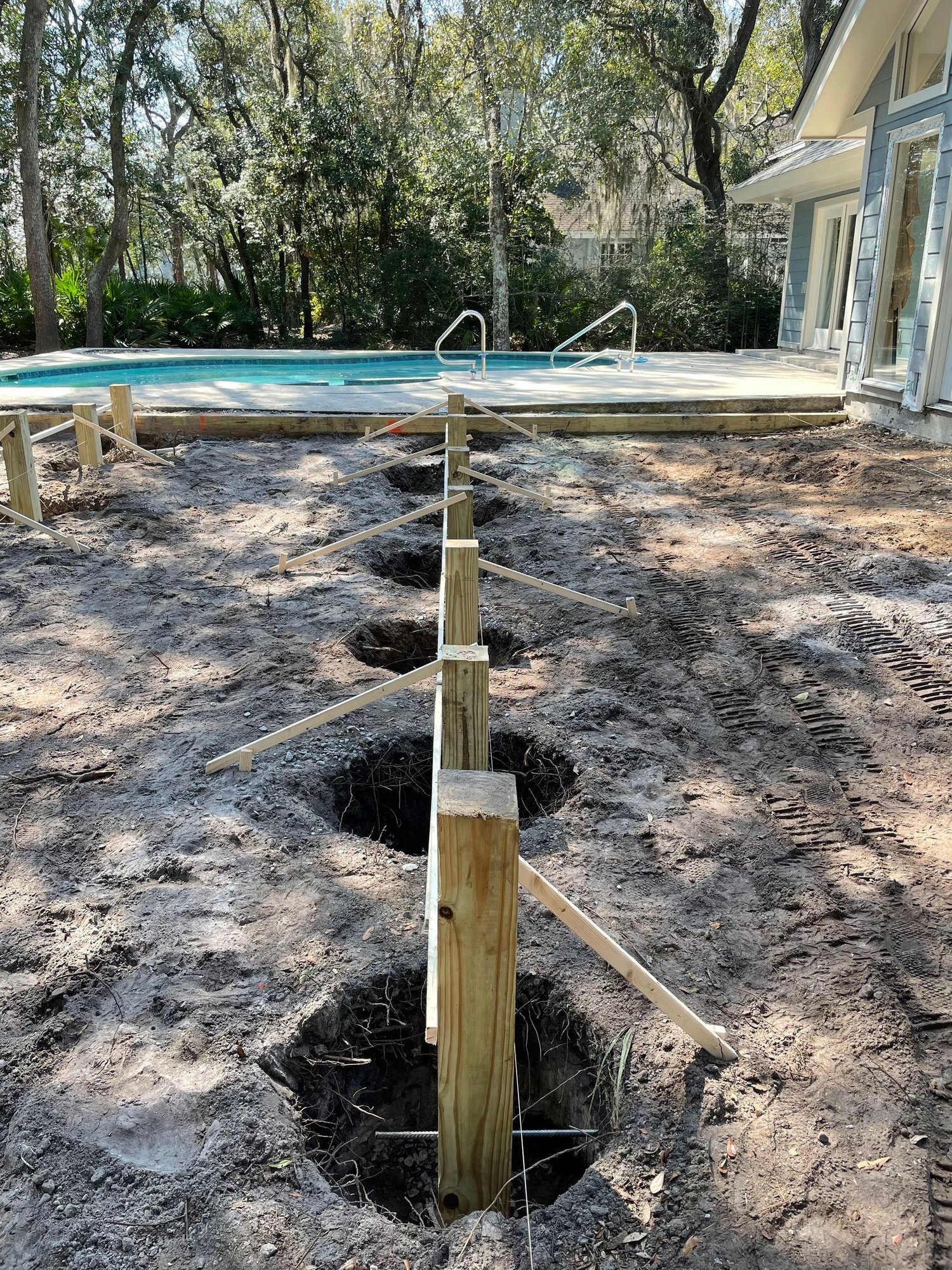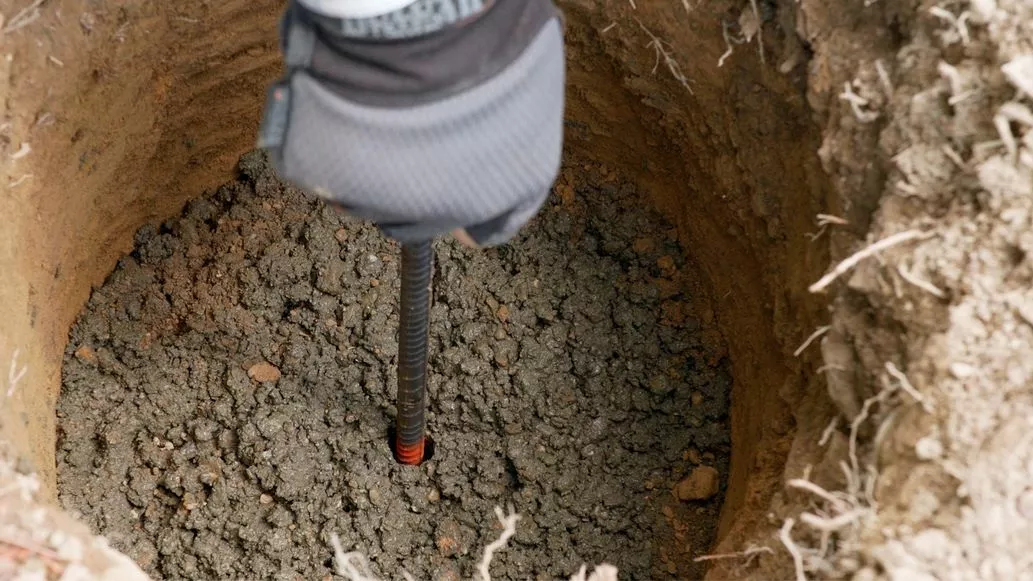Deck Footings Introduced: Recognizing the Trick Elements of a Dependable Deck Structure
Deck Footings Introduced: Recognizing the Trick Elements of a Dependable Deck Structure
Blog Article
Choosing the Right Deck Footings for Security and Resilience
When it comes to developing a deck, one of the most essential choices you will certainly make is selecting the appropriate footings for stability and longevity. The longevity and security of your deck depend greatly on the type of footings you choose, as they give the necessary support and stability to stand up to the examination of time. With a myriad of choices offered, it can be overwhelming to establish which grounds are best suited for your details requirements. In this conversation, we will discover the different sorts of deck grounds, take into consideration the essential factors to evaluate when deciding, and dive into the pros and disadvantages of different choices. By the end, you will certainly have a clearer understanding of the options handy and be much better outfitted to make a notified choice for your deck project.
Sorts Of Deck Footings
There are a number of kinds of deck footings that can be utilized, each offering distinct benefits and factors to consider. One usual type of footing is the concrete pier footing. These grounds contain a round opening full of concrete, which provides a strong foundation for the deck posts. Concrete pier grounds are relatively very easy to install and provide superb stability, making them a popular option for several deck jobs.
An additional kind of ground is the helical stack footing. Helical piles are steel shafts with helical plates connected to them. These footings are mounted by screwing them right into the ground, which develops a safe and secure foundation for the deck. Helical heap grounds are ideal for areas with difficult dirt problems, as they can be mounted in virtually any kind of dirt. If required., they additionally enable for simple change and leveling of the deck.
Additionally, some building contractors select precast concrete footings. These footings are constructed from long lasting concrete and come in numerous shapes and sizes to accommodate various deck layouts. Precast concrete footings are hassle-free to mount and give a secure base for the deck structure.
Finally, another alternative is the post-in-anchor ground system. This kind of footing involves driving a steel anchor into the ground and attaching it to the deck post. It supplies adaptability in regards to positioning the deck posts and appropriates for decks with light-weight frameworks.
When choosing the ideal kind of deck footing, it is vital to consider elements such as dirt conditions, deck load, and regional building regulations (Deck Footings). Consulting with a professional service provider or architectural engineer can assist make certain the suitable ground is picked for a secure and safe deck
Elements to Think About When Picking Footings
When selecting the proper grounds for a deck, it is important to thoroughly take into consideration different factors such as dirt conditions, deck tons, and adherence to neighborhood building regulations. These factors play a substantial function in making certain the security and sturdiness of the deck framework.
The kind of dirt on which the deck will be built identifies the type of grounds required. On the other hand, decks constructed on clay or large soils may call for grounds that can accommodate the soil's propensity to broaden and contract.
Another vital variable is the deck tons. The weight of the deck, including the products utilized and any kind of possible online tons such as furnishings or celebrations, must be thought about when choosing footings. The grounds should be designed to birth the weight of the deck and distribute it evenly to protect against any type of structural concerns or failings.
Last but not least, adherence to neighborhood building regulations is extremely important. Building ordinance differ from area to area, and it is vital to adhere to the particular requirements established by the neighborhood authorities. Deck Footings. These codes make certain that the deck is constructed safely and satisfies the required requirements for structural honesty and load-bearing ability
Concrete Grounds: Cons and pros

Concrete grounds use a number of advantages and drawbacks when utilized as the foundation for a deck. On the silver lining, concrete footings provide outstanding stability and toughness. Concrete is a stiff and strong material that can sustain hefty tons and hold up against various climate condition. It also has a lengthy life expectancy, making it a trustworthy choice for long-term use.
An additional benefit of concrete grounds is their versatility. They can be poured into different sizes and shapes to accommodate different deck styles and arrangements. Concrete grounds can be customized to fit the details requirements and requirements of the deck structure.
Nevertheless, there are also some disadvantages to using concrete footings. One significant negative aspect is the cost and labor associated with their setup. Concrete footings require excavation and frequently require the aid of heavy machinery. This can raise the general expense of the deck job and may need expert aid.

Helical Piers Vs. Sonotubes: Which Is Much better?
In thinking about the foundation choices for a deck, the contrast in between helical piers and sonotubes is critical in determining the superior selection. They are turned into the ground using hydraulic machinery, providing a resilient and steady foundation for the deck.
The helical plates on read the piers develop a solid grip with the soil, shifting or protecting against any kind of activity of the deck. Sonotubes, on the various other hand, depend only on the concrete loading for security, which might not use the exact same level of stamina and resistance.
In terms of installation, helical piers are reasonably less complicated and faster to mount contrasted to sonotubes. The hydraulic machinery utilized to twist the piers into the ground makes certain a fast and reliable process. Sonotubes, on the other hand, call for digging holes and putting concrete, which can be time-consuming and labor-intensive.
In addition, helical piers are a more flexible alternative. look at more info If required, they can be used in different dirt problems and can be adjusted or reinforced. Sonotubes, on the various other hand, may need extra assistance, such as rebar, in particular dirt conditions or areas with high tons demands.
Picking the Right Footings for Your Deck's Measurements
For optimum architectural integrity, it is important to carefully select the suitable footings that line up with the measurements of your deck. The measurements of your deck, including its length, size, and elevation, play a considerable function in determining the kind and size of footings called for.
When choosing footings for your deck, it is essential to take into consideration the load-bearing capacity of the dirt. The weight of the deck, incorporated with the weight of any kind of furnishings or individuals on it, puts in a considerable pressure on the grounds (Deck Footings). It is crucial to choose footings that can effectively sustain this weight without moving or sinking over time.
The shapes and size of the footings must likewise be considered. Larger decks with higher measurements need bigger grounds to supply enough stability and support. The shape of the grounds, whether they are rounded or square, relies on the style and format of the deck. In addition, the deepness at which the grounds are installed should be figured out based upon the frost line in your area to stop any kind of heaving or changing due to freezing temperatures.
Conclusion
Finally, selecting the appropriate deck footings is essential for guaranteeing stability and durability. Variables such as the kind of grounds, the deck's dimensions, and the benefits and drawbacks of different choices should be thought about. Concrete footings use strength and long life, but might be much more pricey and lengthy to set up. Helical piers and sonotubes have their very own advantages and disadvantages. Inevitably, choosing the appropriate footings for your deck's details requirements is crucial for a lasting and effective structure.
These footings are composed of a round opening filled with concrete, which supplies a strong foundation for the deck blog posts. Concrete pier footings are relatively you can try this out simple to mount and offer excellent stability, making them a popular option for numerous deck projects.
Precast concrete footings are hassle-free to mount and offer a secure base for the deck structure.
It offers versatility in terms of placing the deck messages and is ideal for decks with lightweight frameworks.
Concrete footings use numerous advantages and negative aspects when used as the structure for a deck.
Report this page